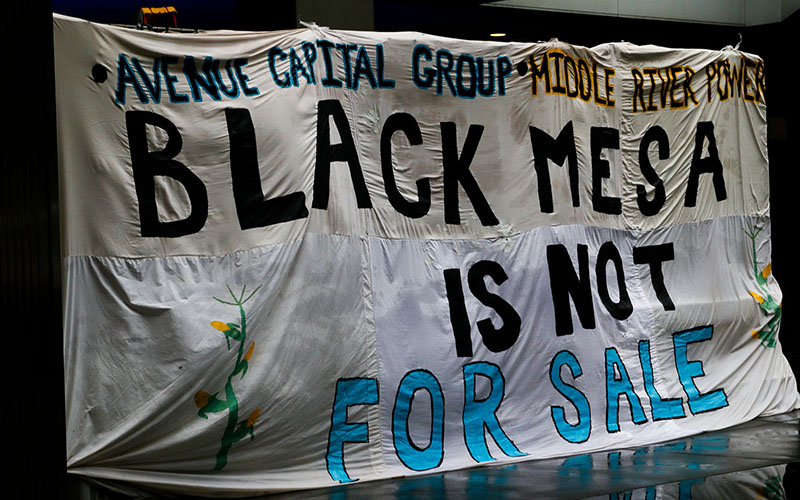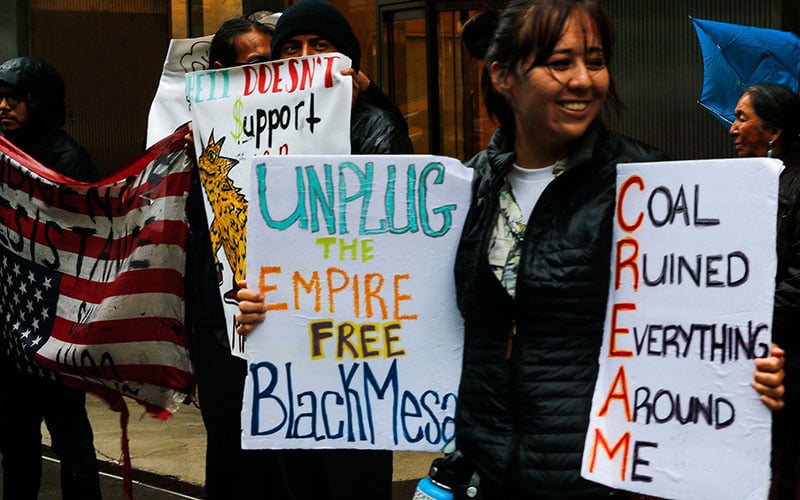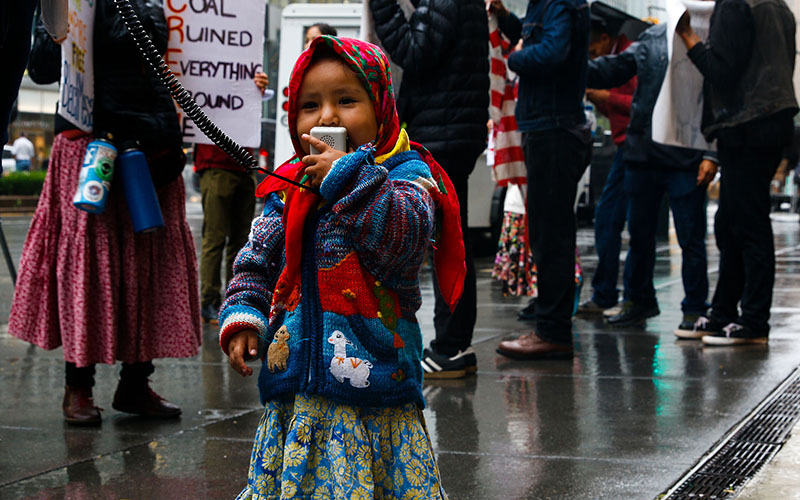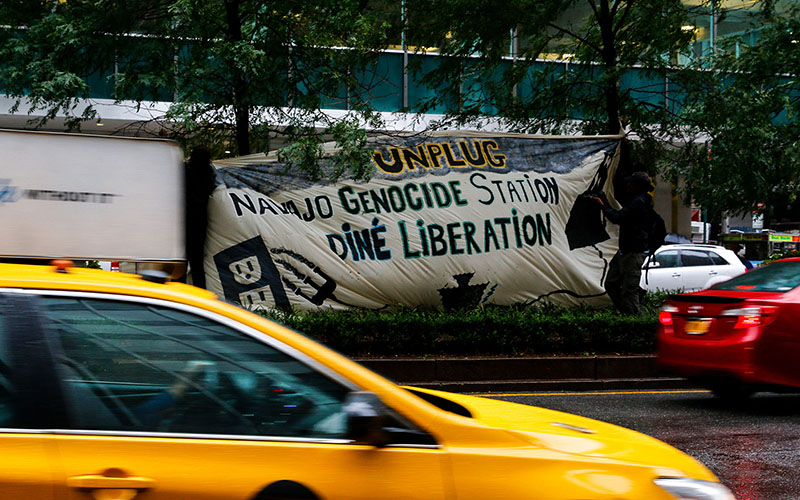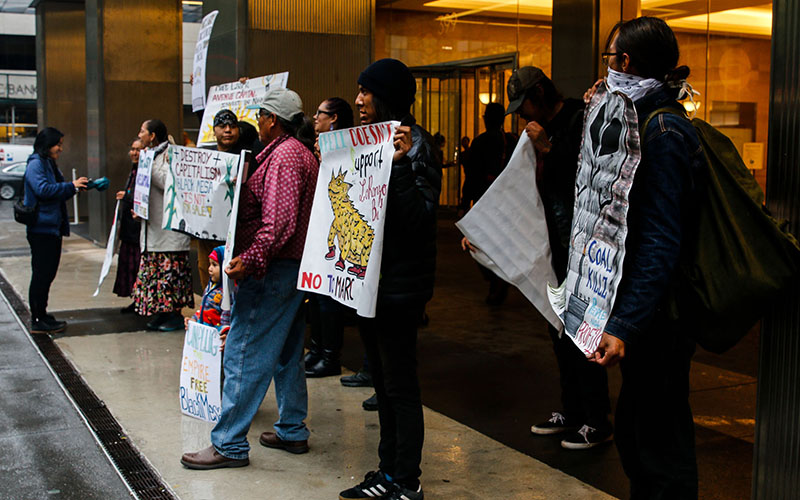NEW YORK – A group of Navajo environmentalists on Monday took their fight against the Navajo Generating Station to Manhattan, where they protested outside the offices of an investment firm that might save the coal-fired plant.
Bundled in boots, coats and layers, the group rallied outside Avenue Capital Group for several hours, standing without umbrellas in a cold New York rain and chanting, “Coal is dead,” and “Avenue Capital, we want renewable.”
The group of 18 targeted Avenue because it has expressed interest in buying NGS, which is slated to close at the end of 2019. Keeping the plant open could save hundreds of jobs at the plant and the nearby Kayenta mine that keeps it fueled with coal.
But the protesters say extended operation of NGS will continue to poison the Navajo Reservation while thwarting any chance to shift to clean energy.
“We’re at a very critical period right now where we can continue developing fossil fuels on the Navajo Nation or we can do something completely different and more sustainable,” said Nadine Narindrankura, who had her 2-year-old daughter, Ahxeenibaa Ashley, strapped to her chest.
A spokesman for Avenue Capital said Monday that the company had “made no decision regarding the NGS project and therefore do not have a comment” on the protest.
The 1970s-era NGS near Page was built to provide power for the Central Arizona Project, which pumps water from the Colorado River to Phoenix and south-central Arizona, among other customers.
But its days were numbered when CAP announced last year that it would no longer buy power from the plant, as falling natural gas prices had made electricity from those plants cheaper. Salt River Project, the majority owner of NGS, said it would close the plant at the end of 2019.
– Cronkite News video by Ian Solomon
Nicole Horseherder and other environmentalists say it’s time to move away from NGS, which is routinely listed as one of the nation’s most-polluting power plants, and shift to sustainable energy.
“We want our people to have the opportunity to own and operate their own energy,” Horseherder said. “We need the revenues for it to revive the nation’s economy and bring some much-needed revenue to the Navajo Nation.”
Protesters cited both solar and wind power as viable alternatives to coal, with most pointing to solar energy as the best choice for the sprawling reservation, the nation’s largest at nearly 27,500 square miles.
“We have a state where we have almost, I think it was 120 days of 100 percent sunlight,” said Jessica Keetso, who grew up on the reservation. “I think – no, I know – solar is the way to go.”
Prospects for the plant began to look up this summer, when the Trump administration considered a plan to support nuclear and coal-fired plants by requiring electrical grid operators to buy a certain amount of power from those plants.
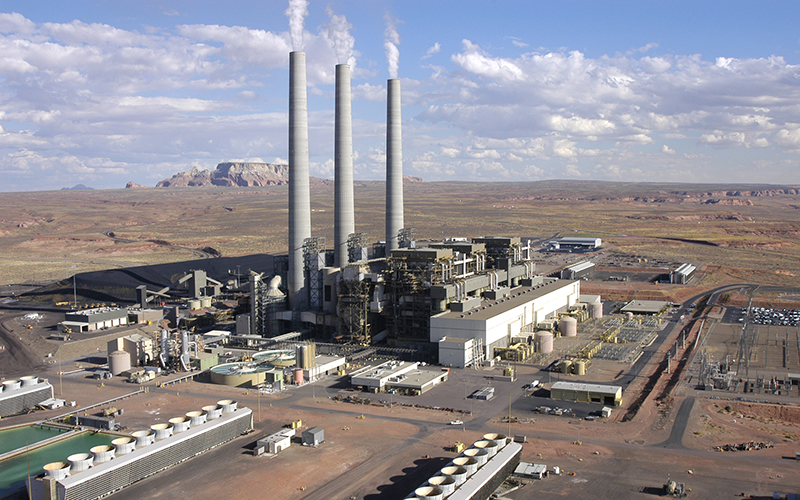
The coal-fired Navajo Generating Station in northeastern Arizona provides hundreds of jobs between the plant and the mine that supplies it, but the plant is scheduled to shut down late next year. (Photo by Amber Brown/Courtesy SRP)
Navajo Nation officials cautiously welcomed that announcement, citing the jobs that are on the line in an area of high unemployment if the plant closes. Census Bureau figures from 2016 said that of the 127,000 Navajo of working age, more than half are not even considered part of the workforce and of those who are, 20 percent were unemployed.
Calls seeking comment from the tribe were not immediately returned.
But Horseherder said saving the plant is not the best way to save jobs. If an investor tries to revive the NGS, she said, they “might make a profit, but in the long run, we’re going to be in this exact same place again.”
Narindrankura said that moving from coal to solar energy would ultimately improve the quality of life for everyone on the reservation.
“As of right now, only a select few are employed by the mine and by the Navajo Generating Station, and their quality of life and their health deteriorates fast,” she said.
Nicholas Ashley, Ahxeenibaa’s father, said he came to protest “mainly because of my daughter.”
“The future that she’s going to inherit is a future that’s not too exciting,” he said, “and it’s pretty scary.”
But he said fossil fuels affect more than his daughter or the reservation.
“Everybody needs to wake up – it’s not just indigenous people,” Ashley said. “This is for everybody, it’s not just us.”
This story is part of Elemental: Covering Sustainability, a new multimedia collaboration between Cronkite News, Arizona PBS, KJZZ, KPCC, Rocky Mountain PBS and PBS SoCal.
